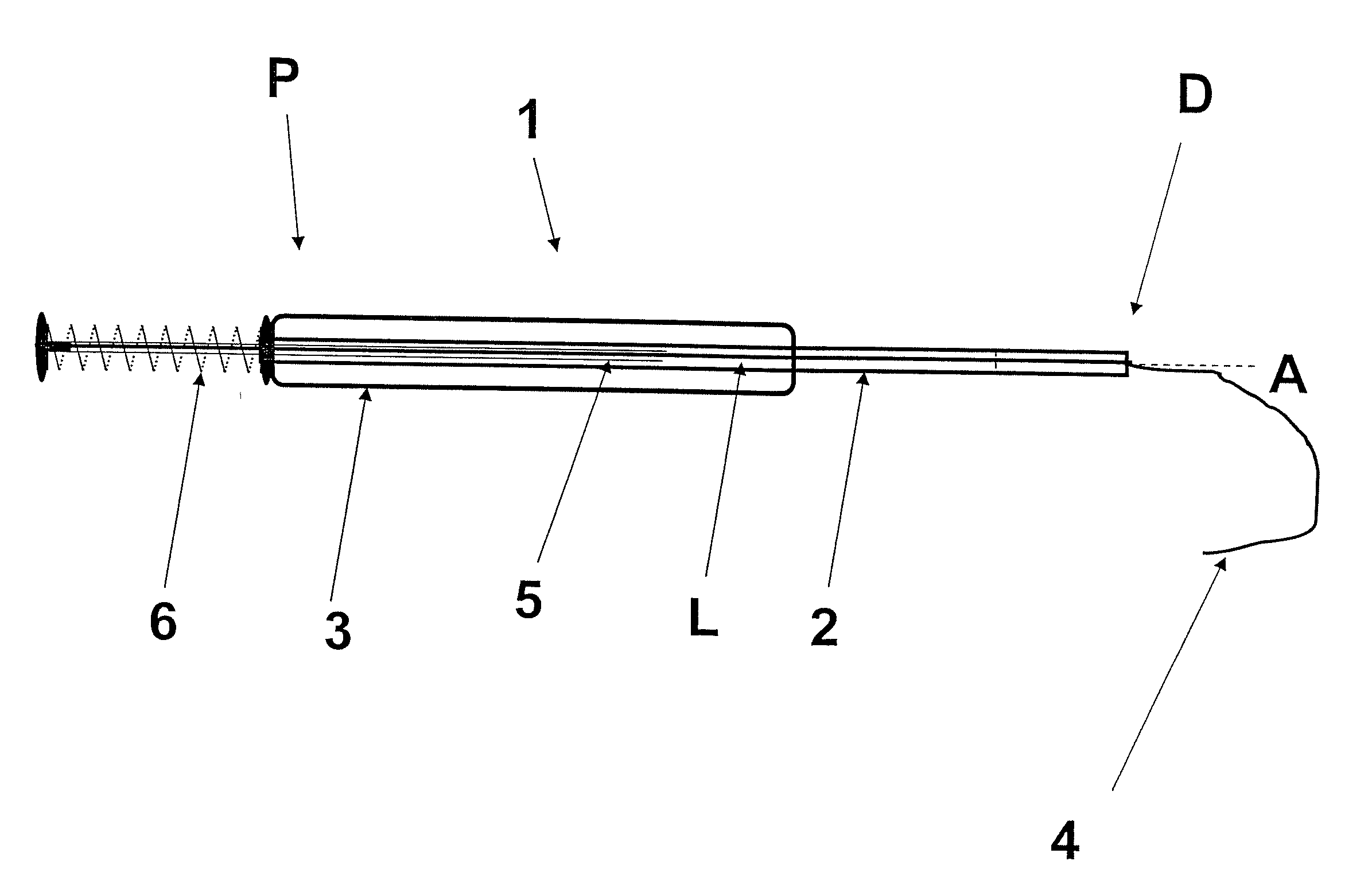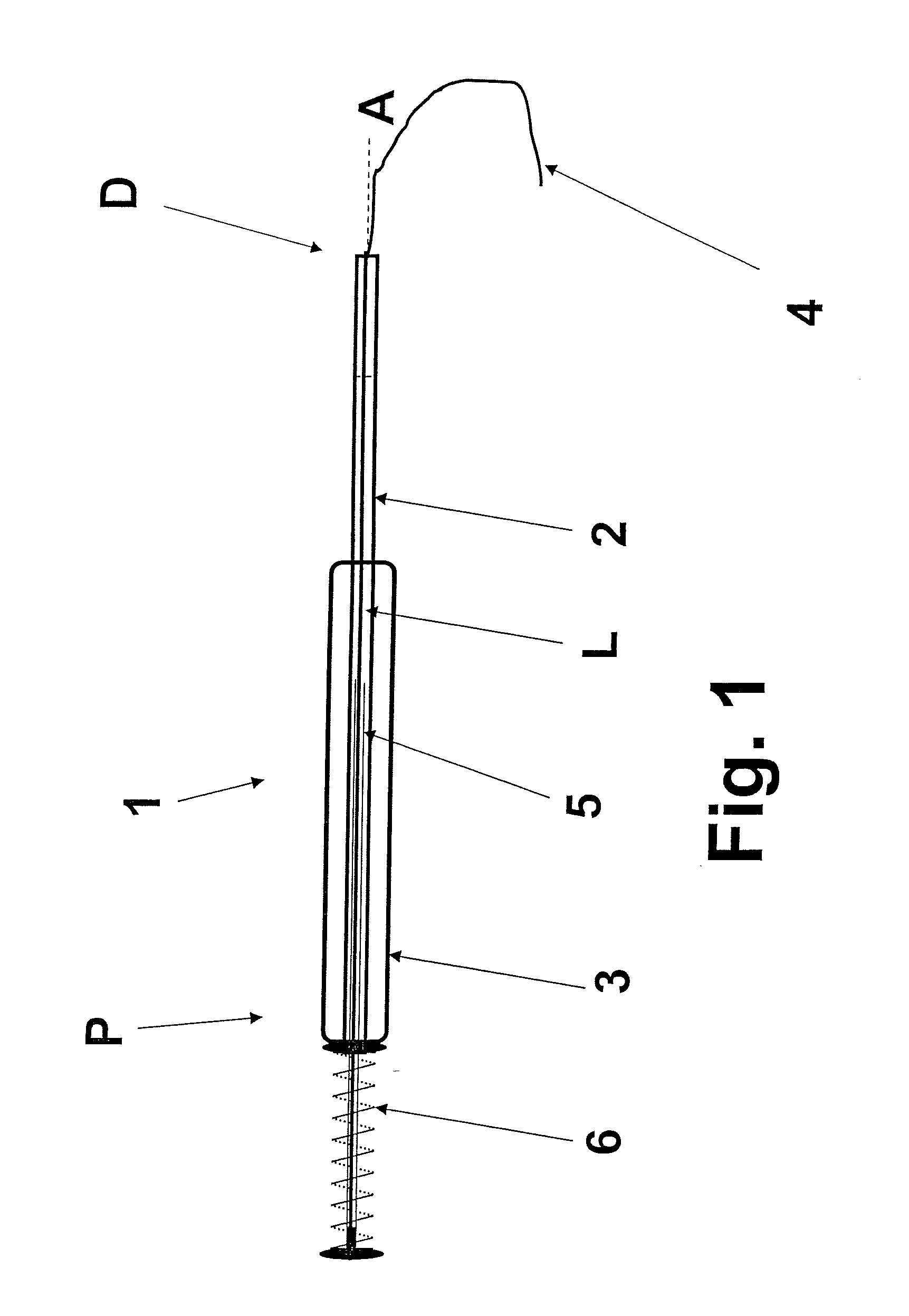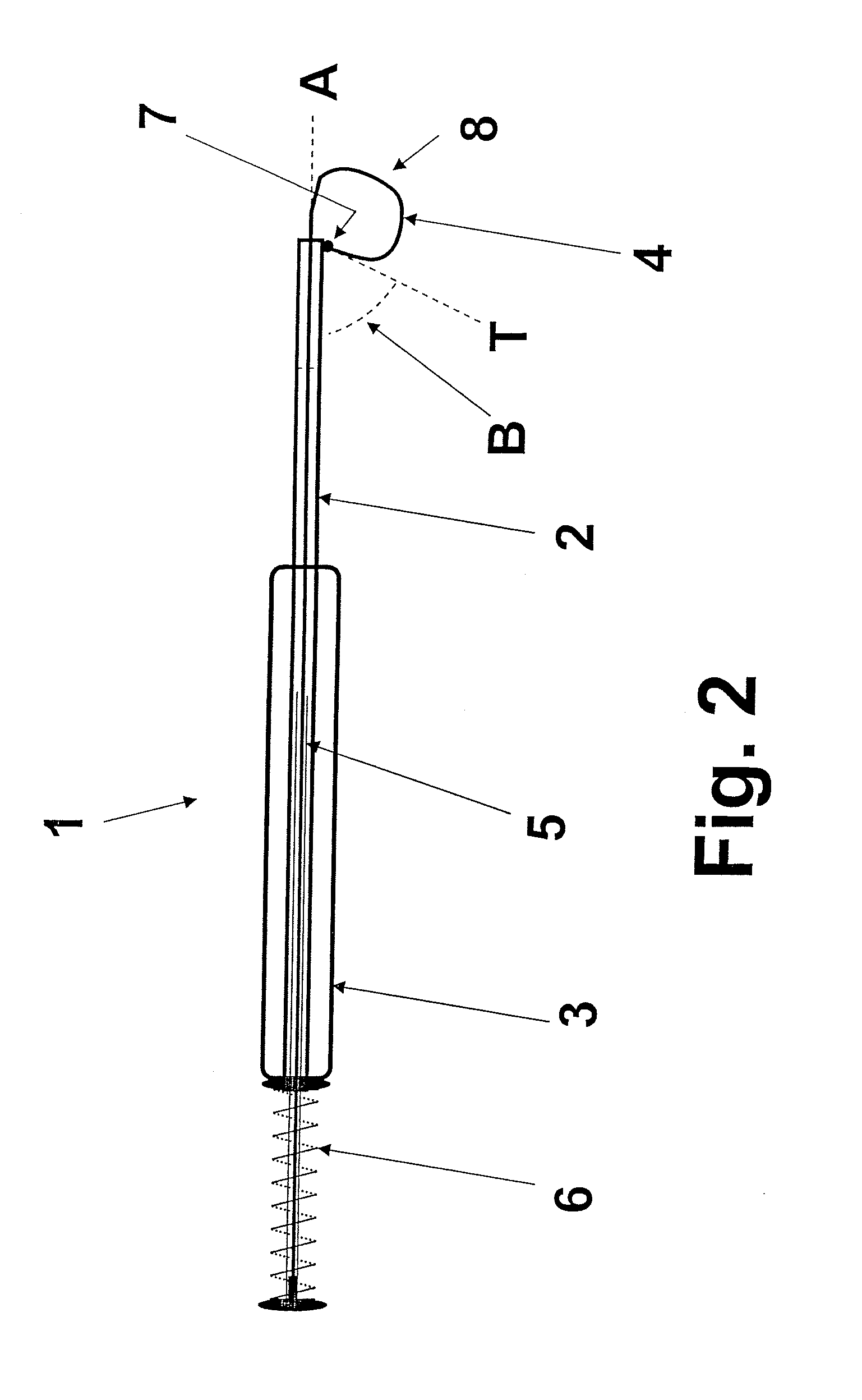Methods and devices for eye surgery
a technology for eye surgery and eye surgery, applied in the field of eye surgery, can solve the problems of reducing life quality, loss of vision ability, and none of them have been proved to be practical, effective, safe and routine clinical practice safe, and achieve the effect of successfully using the device and method and convenient integration in the lens extraction surgery
- Summary
- Abstract
- Description
- Claims
- Application Information
AI Technical Summary
Benefits of technology
Problems solved by technology
Method used
Image
Examples
example 1
Experiments Using Different Filaments
[0132]Evaluation of lens-capsule dissection and shaving off lens epithelial cells from the inner capsular surface. Simulated lens extraction surgery in porcine cadaver eyes.
Young'sModulusDiameterNoFilament materialGPammOutcome1Polyethylene0.20.5Loop forms in the lens capsule, dissects0.1-1.2 GPathe lens and the capsule, simultaneouslyshaving off lens epithelial cells from theinner capsular surface.2Polyethylene0.50.4Outcome as in Experiment no 1, andeasier lens - capsule dissection, andmore efficient cell removal3Polypropylene1.00.25Outcome as in Experiment no 2, and1.0-2.0 GPaformation of a couple of loops, and evenmore efficient cell removal4Polyamid / nylon1.50.15Outcome as in Experiment no 3, and1.2-3.0 GPaformation of a several loops, and evenmore efficient cell removal5Polyvinylidenefluoride2.00.14Outcome as in Experiment no 4, and1.0-3.0 GPaeven more efficient cell removal6Reinforced2.50.12Outcome as in Experiment no 5, andPolyamid / nylonform...
example 2
Verification of the Invention by Showing the Different Parameters in Hand-Made Prototypes
[0134]The total length (Lt), outer diameter (OD), inner diameter (ID) as well as the choice of materials are presented. The total length Lt means the distance between the proximal and distal ends of the component, if not others are mentioned. For the filament the effective length (Le) is also presented, meaning the length of the filament introduced in the lens capsule that forms the loops and the coil of loops. The use of prototypes was evaluated by simulated lens extraction surgery in fresh porcine cadaver eyes received from a nearby slaughter-house. After the lens was extracted from the eye globe, cornea and iris were removed and the amount of remaining lens epithelial cells in the lens capsule was assessed by observation, and compared to the amount of cells assessed in control eyes, i.e. conventional lens extraction.
Prototype I (Basic Concept)
[0135]Tube 2 stainless steel, L=100 mm, OD=0.81 mm...
example 3
Verification of the Idea, by Showing the Different Varying Options to Use the Device During the Surgery
[0158]The use of prototype VI, described in Experiment 2, after capsulorhexis, but before lens extraction.[0159]The use of prototype VI after lens extraction.[0160]The use of prototype VI both before and after lens extraction.
[0161]Results and conclusions: Confirmed the invention that the device can be used before and / or after the lens extraction. When using it before lens extraction, as an option to hydro-dissection, admit a second use of the device after completed lens extraction as well.
PUM
 Login to View More
Login to View More Abstract
Description
Claims
Application Information
 Login to View More
Login to View More - R&D
- Intellectual Property
- Life Sciences
- Materials
- Tech Scout
- Unparalleled Data Quality
- Higher Quality Content
- 60% Fewer Hallucinations
Browse by: Latest US Patents, China's latest patents, Technical Efficacy Thesaurus, Application Domain, Technology Topic, Popular Technical Reports.
© 2025 PatSnap. All rights reserved.Legal|Privacy policy|Modern Slavery Act Transparency Statement|Sitemap|About US| Contact US: help@patsnap.com



